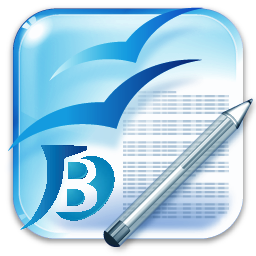Satwa Negeriku: STEM-based encyclopedia as literacy media for elementary student
Abstract
This research aims to develop, measures the feasibility, and implements STEM-based Encyclopedia to train the literacy of elementary school students. This study uses a 4D development model from Thiagarajan. The subjects were students in grades 4, 5, and 6 of the teachers at Muhammadiyah Pepe Elementary School, Yogyakarta. Encyclopedias were tested on students and teachers after proper approval by material experts, linguists, and media experts. Data obtained through questionnaires, interviews, field notes and observations. The validation results show that the Encyclopedia is worth using to support the literacy program. The results of the small group trial received a value of 95 (very good), the large group trial received a score of 92 (very good), and also the good application received a score of 91.5 (very good). Students find encyclopedias very interesting, easy to understand, and increase students' understanding of endangered species in Indonesia. The observations also show the use of STEM-based encyclopedias leading to the realization of competency literacy indicators. The teacher also appreciates that the encyclopedia is suitable to be used as teaching material that supports the literacy program.
Keywords
Full Text:
PDFReferences
Acar, D., Tertemiz, N., & TaÅŸdemir, A. (2018). The effects of STEM training on the academic achievement of 4th graders in science and mathematics and their views on STEM training teachers. International Electronic Journal of Elementary Education, 10(4), 505-513. https://doi.org/10.26822/iejee.2018438141
Arikunto, S., & Safruddin A.J, C. (2009). Evaluasi program pendidikan. Jakarta: Bumi Aksara.
Carmeli, A., Gelbard, R., & Reiter-Palmon, R. (2013). Leadership, creative problem-solving capacity, and creative performance: The Importance of knowledge sharing. Human Resource Management, 52(1), 95-121. https://doi.org/10.1002/hrm.21514
Corlu, M. S., Capraro, R. M., & Capraro, M. M. (2014). Introducing STEM education: Implications for educating our teachers for the age of innovation. Education and Science, 39(171), 74-85. Retrieved from http://hdl.handle.net/11693/13203
Fauziah, D. A., Supraptono, E., & Kartono, R. (2018). Pengembangan ensiklopedi digital tari daerah Jawa Tengah berbasis android dengan metode linear sequential model. JURNAL IPTEKKO: Jurnal Ilmu Pengetahuan & Teknologi Informasi, 20(1), 77-91. https://doi.org/10.33164/iptekkom.20.1.2018.77-91
Gottesman, A. J., & Hoskins, S. G. (2013). CREATE Cornerstone: Introduction to scientific thinking, a new course for STEM-interested freshmen, demystifies scientific thinking through analysis of scientific literature. CBE Life Sciences Education, 12(1), 59-72. https://doi.org/10.1187/cbe.12-11-0201
Herak, R., & Lamanepa, G. H. (2019). Meningkatkan kreatifitas siswa melalui STEM dalam pembelajaran IPA. EduMatSains : Jurnal Pendidikan, Matematika Dan Sains, 4(1), 89-98. Retrieved from http://ejournal.uki.ac.id/index.php/edumatsains/article/view/1047
Hudha, M. N., Triwahyuningtyas, D., Rafikayati, A., Fajaruddin, S., Maryani, I., Widiaty, I., Permanasari, A. (2019). How is STEM learning for children with special needs in Indonesia? Journal of Physics: Conference Series, 1402(4). https://doi.org/10.1088/1742-6596/1402/4/044104
Imer, N. (2016). Effects of a teacher professional development program on science teachers views about using computers in teaching and learning. International Journal of Environmental and Science Education, 11(15), 8026-8039.
Ismail, I., Permanasari, A., & Setiawan, W. (2016). Efektivitas virtual lab berbasis STEM dalam meningkatkan literasi sains siswa dengan perbedaan gender. Jurnal Inovasi Pendidikan IPA, 2(2), 190. https://doi.org/10.21831/jipi.v2i2.8570
Maryani, I., Fitriani, I. N., & Sulisworo, D. (2019). The science encyclopedia based on characters to improve the natural science concepts understanding in elementary school students. Journal of Physics: Conference Series, 1318(1). https://doi.org/10.1088/1742-6596/1318/1/012016
Maryono, M., Ishartati, I., Bektiningsih, P., & Supriyono, S. (2017). Ensiklopedi: Koleksi rujukan dengan informasi mendasar dan lengkap soal ilmu pengetahuan. Retrieved from http://masyono.staff.ugm.ac.id/files/2017/10/Ensiklopedia-ok-.pdf
Moore, T. J., & Tank, K. M. (2014). Nature-inspired design : A picture STEM curriculum for elementary STEM. In Annual Meeting of the Association of Science Teacher Educators. Retrieved from http://picturestem.org/wp-content/uploads/2014/12/ASTE-2014-PictureSTEM-Paper.pdf
Pertiwi, U. D., Atanti, R. D., & Ismawati, R. (2018). Pentingnya literasi sains pada pembelajaran IPA SMP abad 21. Indonesian Journal of Natural Science Education (IJNSE), 1(1), 24-29. https://doi.org/10.31002/nse.v1i1.173
Profauna Indonesia. (2018). Fakta tentang Satwa Liar Indonesia | PROFAUNA.
Salleh, M., Jusoh, A., Embong, R., & Mamat, M. (2018). Learning Organizational Model in the 21th century classroom at Sultan Mahmud science secondary school in Terengganu, Malaysia. International Journal of Academic Research in Progressive Education and Development, 7(4), 410-426. Retrieved from http://hrmars.com/index.php/papers/detail/IJARPED/5334
Setiawan, V. (2017). Strategi komunikasi pustakawan dalam implementasi literasi informasi (studi kasus di perguruan tinggi dengan menggunakan dan memanfaatkan e-resources). Jurnal Penelitian Komunikasi Dan Opini Publik, 21(1), 15-29. Retrieved from https://jurnal.kominfo.go.id/index.php/jpkop/article/download/948/597
Sholahuddin, A. (2011). Pengembangan buku ajar kimia kelas x berbasis reduksi didaktik: Uji kelayakan di SMA Negeri Kota Banjarmasin. Jurnal Pendidikan Dan Kebudayaan, 17(2), 166. https://doi.org/10.24832/jpnk.v17i2.15
Sipayung, H. D., Sani, R. A., & Bunawan, W. (2018, December). Collaborative Inquiry For 4C Skills. 440-445. https://doi.org/10.2991/aisteel-18.2018.95
Siswono, T. Y. E. (2011). Level of student’s creative thinking in classroom mathematics. Educational Research and Reviews, 6(7), 548-553.
Sudjana, N. (2017). Penilaian hasil proses belajar mengajar. Bandung: Rosda Karya.
Sugiyono. (2017). Metode penelitian pendidikan: Pendekatan kualitatif, kuantitatif, dan R&D. Bandung: Penerbit Alfabeta.
Tipani, A., Toto, T., & Yulisma, L. (2019). Implementasi model PjBL berbasis STEM untuk meningkatkan penguasaan konsep dan kemampuan berpikir analitis siswa. BIO EDUCATION: (The Journal of Science and Biology Education), 4(2), 70-76. Retrieved from http://www.jurnal.unma.ac.id/index.php/BE/article/view/1700
Washington. (1974). Thiagarajan, Sivasailam; And Others Instructional Development for Training Teachers of Exceptional Children: A Sourcebook. Indiana Univ., Bloomington. Center for Innovation in Teaching the Handicapped. National Center for Improvement of Educational System. Council for Exceptional Children, 1920 Association Drive, Reston, Virginia 22091 (Single Copy, $5.50).
Wijaya, D. A., Karmila, N., & Amalia, M. R. (2015). Implementasi pembelajaran berbasis STEAM (Science, Technology, Engineering, Art, Mathematics) pada kurikulum indonesia. Proseding Seminar Nasional Fisika Dan Aplikasinya. Retrieved from http://portal.phys.unpad.ac.id/senfa2015/proseding/FP-09_Agusta_Danang.pdf
DOI: http://dx.doi.org/10.26555/bioedukatika.v8i1.15072
Refbacks
- There are currently no refbacks.

This work is licensed under a Creative Commons Attribution-ShareAlike 4.0 International License.
JURNAL BIOEDUKATIKA
ISSN 2338-6630 (Print) | ISSN 2541-5646 (Online)
Organized by Department of Biology Education
Published by Universitas Ahmad Dahlan
Jl.Ringroad Selatan, dk Kragilan, Tamanan, Banguntapan, Bantul, Daerah Istimewa Yogyakarta, Indonesia







